


Ktusing
gamer level 5
4372 xp
4372 xp
followers
5
5
Use my invite URL to register (this will give me kudos)
https://boardgaming.com/register/?invited_by=ktusing
profile badges




recent achievements

I Love Playin' Games
Claim that you have played a game today by clicking the "Played Today!" button on a game page 50 times.
Claim that you have played a game today by clicking the "Played Today!" button on a game page 50 times.

The Silver Heart
Give 10 Silver Hearts to games that you fancy.
Give 10 Silver Hearts to games that you fancy.

The Gold Heart
Give 10 Gold Hearts to games that you love.
Give 10 Gold Hearts to games that you love.

I Got What I Wanted
Add a game to your Owned list that was previously in your Wish list.
Add a game to your Owned list that was previously in your Wish list.
Player Stats
Critic (lvl 2)
435 xp
435 xp
Explorer (lvl 3)
708 xp
708 xp
Professor (lvl 2)
317 xp
317 xp
Reporter (lvl 1)
121 xp
121 xp
About Me
I enjoy playing all types of games. My current favorites include: Lords of Waterdeep, Shadows over Camelot, 7 Wonders, Dominion, Revolution and Alhambra. I play in a couple of weekly game nights and with my kids.


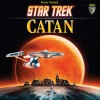

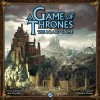

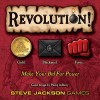



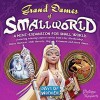



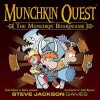
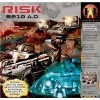






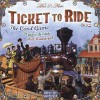


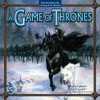

















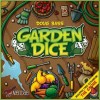


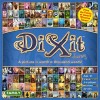






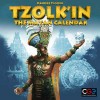







Revolution!
Revolution Details:
No. of Players: 3 – 4
Time to play: 1 Hour
Age: 10+
Set-up: 5 Minutes
Overview
“Secretly bid against your opponents to gain the support of the people, win territory . . . and gather more Gold, Blackmail, and Force for the next round of bidding! Will you try to control the tavern or the fortress? The harbor or the plantation? Knowing where to push for support – and where to back away and let your opponents fight – is the key to victory. It’s a game of bluff, counter-bluff, and surprise.”
Revolution!, by Steve Jackson Games, is comprised of 1 game board that represents the town in which the players will vie for power, 100 Influence cubes (in 4 different colors, 25 per player), 4 Score tokens, 4 Bid boards, 4 Player Screens, and 56 bid resource tokens (12 Force, 12 Blackmail, and 32 Gold). The game components are made of thick and very durable cardboard along with the cubes which are made of wood. The components of the game are of excellent quality.
The Currency of Coups
Before the game beings, it is important for all players to understand what resources they have at their disposal and what they are attempting to gain. The object of the game is to have the most support by the town elders and other influential persons at games end. To gain support, you must use the resources in your possession. These are threats (Force), having access to compromising material (Blackmail), and wealth for bribes (Gold).
Game Play
Using their resources, the players will influence key town officials. Each official, in turn, influences a specific part of the town. By buying the official, the player temporarily gets to use that official’s influence. The officials are briefly described here:
• General (immune to Force): provides Support, Force, and helps influence the town fortress
• Captain (immune to Force): provides support, Force, and helps influence the town harbor
• Innkeeper (immune to Blackmail): provides support, Blackmail material, and helps influence the patrons of the town tavern
• Magistrate (immune to Blackmail): provides support, Blackmail material, and helps influence the town hall
• Priest: provides support and helps influence the patrons of the cathedral
• Aristocrat: provides support, Gold, and helps influence the workers at the plantation
• Merchant: provides support, Gold, and helps influence the town market
• Printer: provides support
• Rogue (immune to Force and Blackmail): provides Blackmail material
• Spy (immune to Blackmail): provides the ability to replace Influence cubes
• Apothecary (immune to Force): provides the ability to swap Influence cubes already on the board
• Mercenary (immune to Force and Blackmail): provides support and Force
Influence
The game is played out with all players taking the same actions at the same time during 4 different phases. As a group, the players will complete the following phases in sequential order.
Phase 1: Espionage
Every Player is aware of what resources each player has available at the beginning of each round.
Phase 2: Bidding
Each player now places their bids behind their player screen.
Each on may place as much or as little of their resources as they like on the officials but can bid on no more than 6 at a time.
Phase 3: Resolution
Once all players have placed all their currently available resources, the Player Screens are removed. Now all the Bid boards beginning with the upper left most official (the General) and moving to the right, the top row are determined. .A player influences and gains support of that official and it’s rewards. All used resources on the Bid Board are returned to the resource piles. Any gained resource are kept and set aside for the next round.
Phase 4: Patronage
At the end of the round, the secret and silent backer of each player will provide enough gold to ensure that each player has at least 5 resources to start the next round.
Victory Goes to…
The game ends when all the Influence spots on the game board have been filled at the end of Phase 3: Resolution. The players now count up their points and adjust their Score tokens as needed on the outside Support track. Once all the counting has been completed and the Score tokens have finished being adjusted, the player with the most Support points wins the game and the town.
Conclusion
Revolution! has become a family favorite in our house. The relatively easy learning curve and fast pace keeps everyone interested. The short playing time is also a plus for younger/newer players. The difficulty of game play and strategy is totally determined by the experience level of the players involved. While this is certainly a “light” game is does have several elements that even avid gamers will find intriguing.